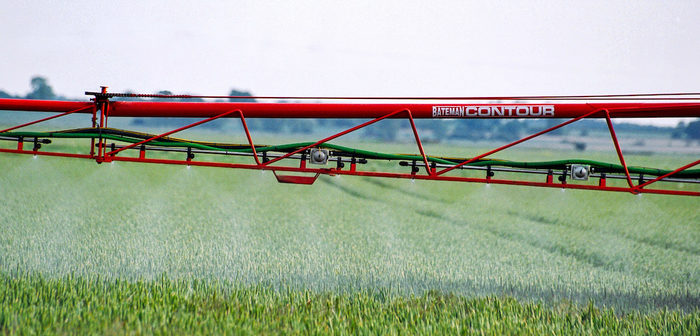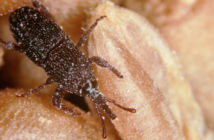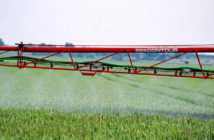According to Adama, getting ahead and staying ahead of disease pressure can boost winter wheat yields by an average of 0.3 t/ha.
These are the findings of six seasons of trials using the multi-site fungicide Arizona (500g/litre folpet) in combination with single-site active ingredients.
“Putting Arizona to work alongside single-site fungicides at key stages in the growing cycle helps crops to retain green leaf area for longer, which in turn enables plants to capture more sunlight and produce a better yield,” explains Andy Bailey, Adama’s fungicides technical specialist.
“At an ex-farm wheat price of £200/t, a yield uplift of 0.3t/ha is equivalent to an additional £60 of income per hectare,” he adds. “That equates to a return of up to £4 for every £1 spent on folpet.”
He says that the addition of folpet can also play a crucial role in disease resistance management.
“It is important to remember that the erosion of the efficacy of the current arsenal of single-site fungicides means growers can no longer rely on the curative activity of these actives as a ‘get out of jail free card’ once infections have taken hold,” he explains.
“Instead, it is vital to get ahead of diseases by applying early season protection and to stay ahead by making subsequent treatments as the crop develops and each ensuing leaf emerges. The addition of Arizona not only boosts protection at these key stages, but also protects single site active ingredients by slowing the rate at which disease resistance develops.”
When tackling septoria in winter wheat, the company recommends including Arizona at T1, delivering an average uplift of 0.21t/ha compared to 0.14 t/ha when applied at T2. Inclusions at both T1 and T2 provided an uplift of 0.35t/ha.
In severe situations the company advise folpet to be used at the T0.
“Timing of application is dependent on a range of factors including the variety being grown, drilling date, location, prevailing weather conditions, previous fungicide applications, ongoing disease pressure and the partner products being used,” Andy continues.
“As a general rule, Arizona should be used at least once during the season, but there is solid evidence from six years of testing and 272 field-based comparisons to prove that including it twice will provide improved persistence and better long-term protection.”
Application rate also had an impact. Two treatments of 1.0 litre/ha (T1 and T2) increased yields by 0.32t/ha on average, while three treatments (T0, T1 and T2) saw an uplift of 0.39t/ha.
Two applications of 1.5 litre/ha (T1 and T2) boosted yields by 0.41t/ha.
Arizona in barley
Similar yield benefits were seen in barley when used to prevent or control ramularia, net blotch and rhynchosporium.
“In winter barley the key timing to use Arizona to control ramularia is at T2, but it can also be used at T1 to boost disease control and to help with resistance management,” Andy continues.
“The T2 timing is also key for protecting against ramularia, with a two-spray approach (for example at T1 and T2) giving the best results, particularly where disease pressure builds early in wet conditions.
“Depending on the circumstances, the inclusion of Arizona alongside single site actives can provide a positive yield response in excess of 0.3t/ha, with some protocols seeing yields increase by as much as 1.0 t/ha.”
Where resistance management is the key driver, he adds that it is advisable to maximise the dosage of the active ingredients with the lowest risk of resistance.
“In other words, use a full rate dose of Arizona to protect ‘at risk’ single-site modes of action, and, where disease pressure allows, reduce the selection pressure exerted on single site fungicides by applying them at an appropriate dose in mixture.
“In all situations, Arizona adds valuable efficacy against the key wheat and barley diseases and provides a good return on investment,” he concludes.
“That it also prolongs the effective life of those fungicides already at risk of resistance is the icing on the cake and an added reason for growers to put it to work alongside their usual array of single-site actives.”




